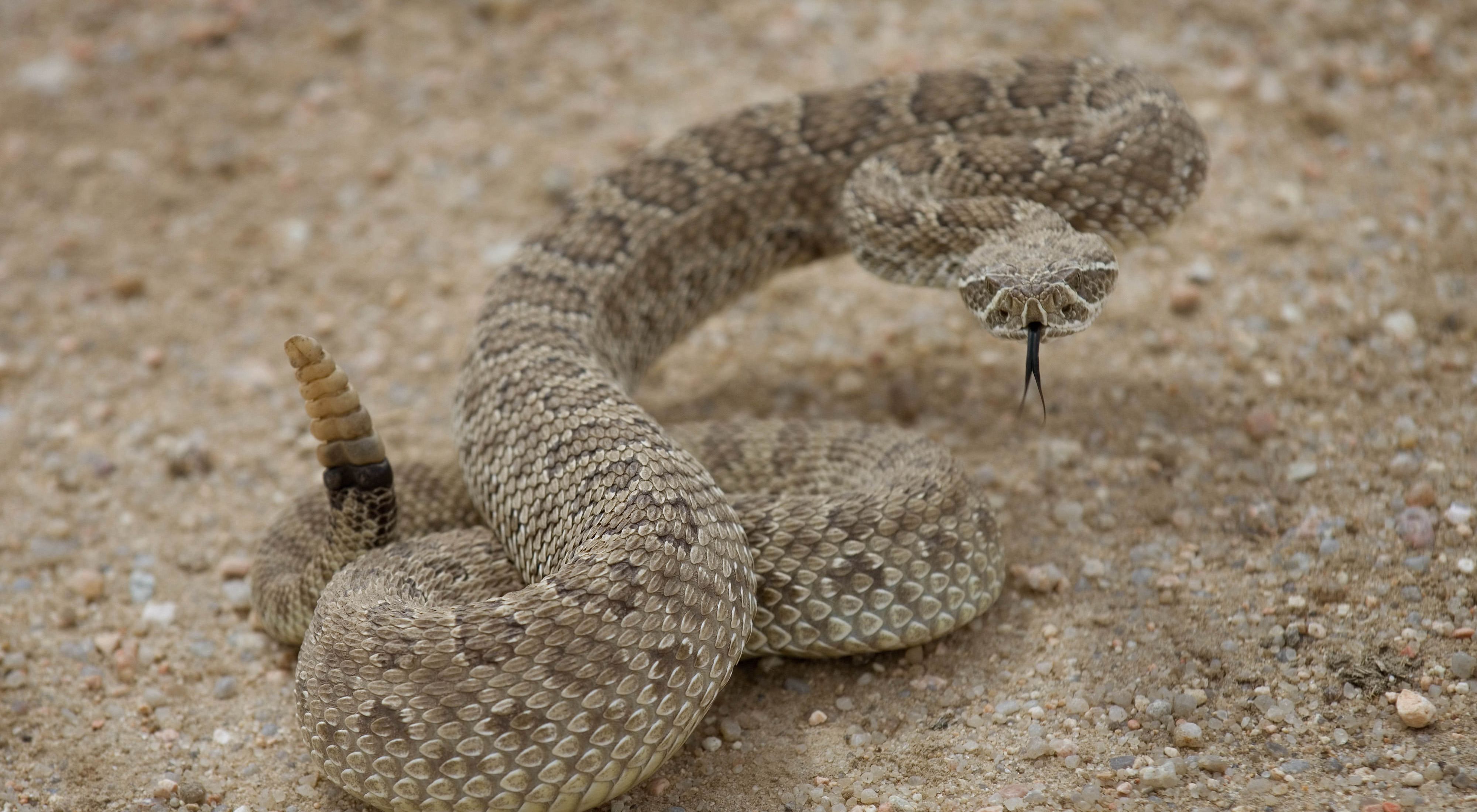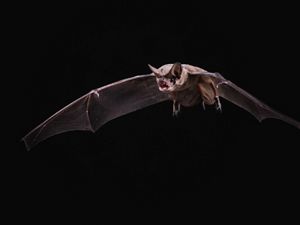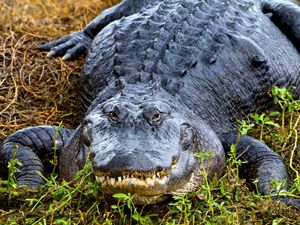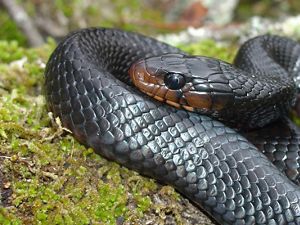Prairie Rattlesnake Fast Facts
Common name: Prairie Rattlesnake
Scientific name: Crotalus viridis
Conservation status: Least Concern (Population stable)
Lifespan: 16-20 years
Length: Typically exceeds 3.3 feet (100cm)
Meet the Prairie Rattlesnake
Sadly, apocryphal stories of prairie rattlesnakes harmoniously sharing burrows with prairie dogs and burrowing owls are untrue. In fact, prairie rattlesnakes will eat owl and prairie dog young, not a very neighborly gesture. However, these venomous snakes will live in prairie dog tunnels once the original inhabitants have left or been digested.
As its name implies, the prairie rattlesnake’s range is centered in the middle of the United States, from Canada south to Texas and from Idaho east to Iowa. Growing around 35-45 inches in length, the snake is usually a greenish gray, olive green or greenish brown, though some individuals are light brown or yellow. Unsurprisingly, the rattlesnake has a rattle, to which it adds a new segment each time it sheds its skin.
Mating usually happens between mid-summer and early fall. Young are born between August and October. Litter size is proportionate to the size of the female. Smaller snakes may give birth to as few as 5 young, larger mothers as many as 25 young. Mortality rates are high in the first year. Predators include mammalian carnivores, raptors and king snakes.
Prairie rattlesnakes hibernate in winter and sometimes congregate in hibernation dens. Individuals often return to the same den year after year, migrating to hunting territories after waking. They inhabit a wide variety of habitat, ranging from prairies to wooded mountains. When inactive, they typically rest in caves, burrows and crevices.
Protecting the Prairie Rattlesnake
Historically, prairie rattlesnake populations declined due to hunting and habitat fragmentation. Though the population trend is now more steady, the prairie rattlesnake is still an extremely rare species.
In 1999, Conservancy staff found the prairie rattlesnake at the Broken Kettle Preserve—Iowa’s largest remaining grassland prairie. Broken Kettle Grasslands is the core of TNC’s protection efforts in the northern portion of the Loess Hills, where the TNC and partners have protected more than 6,000 acres to date.



